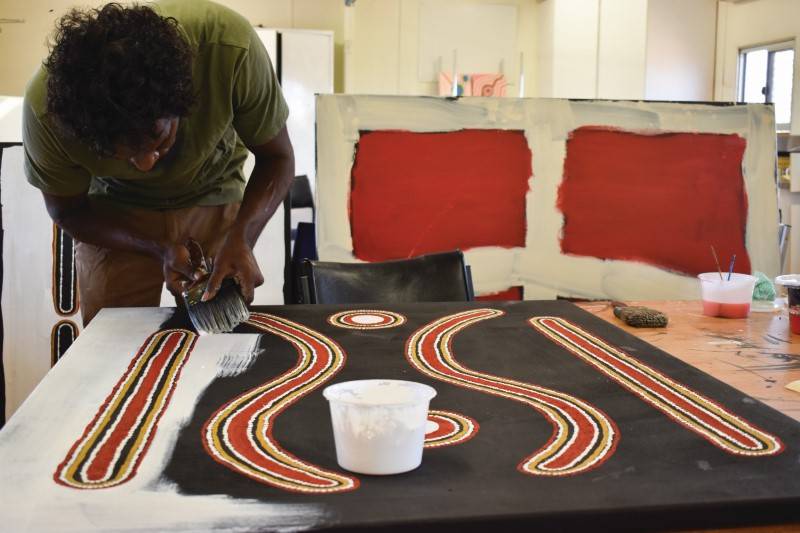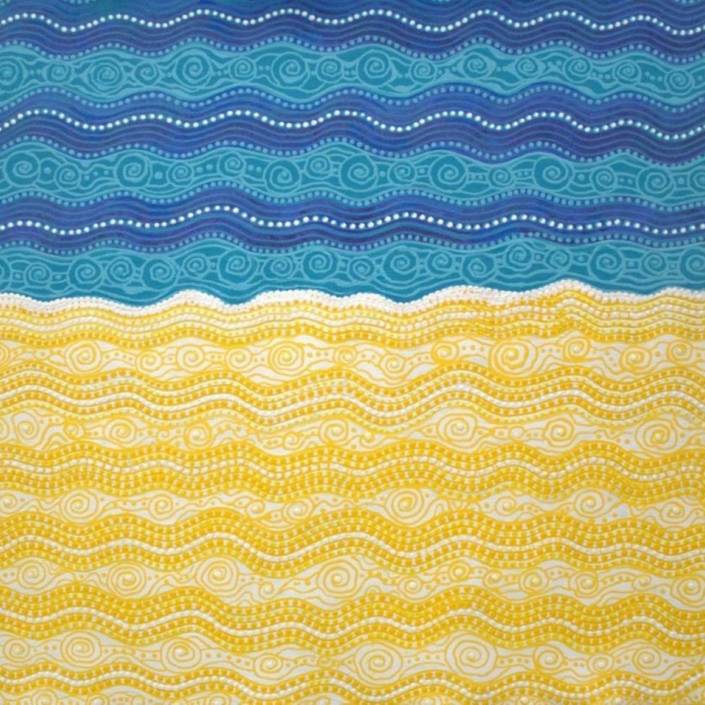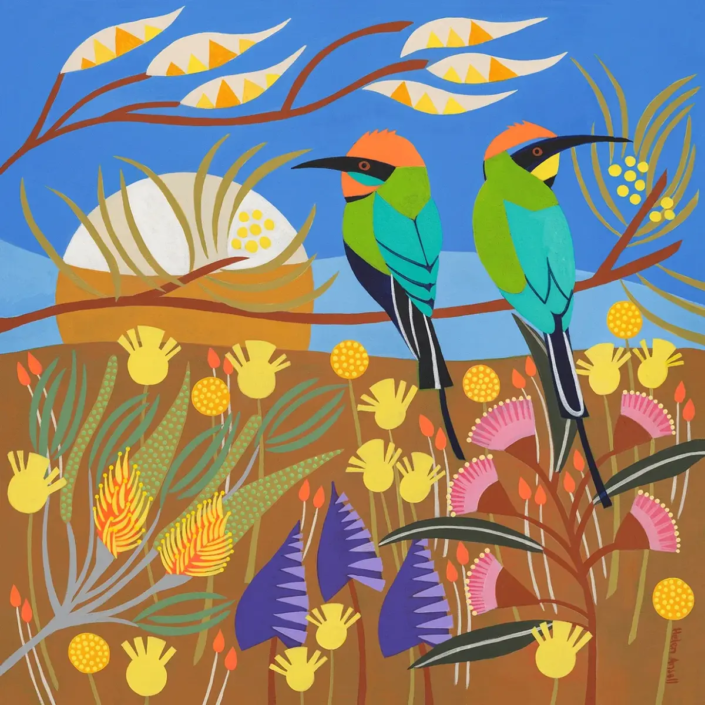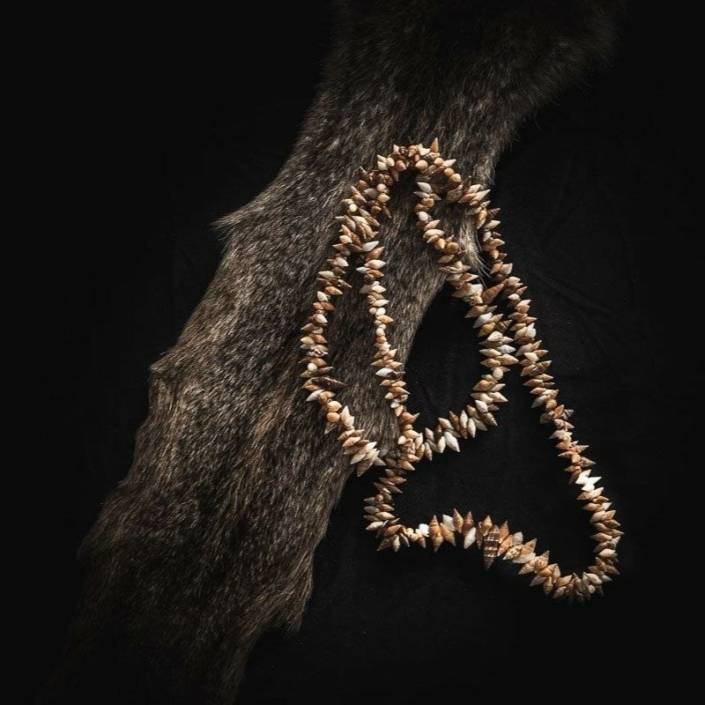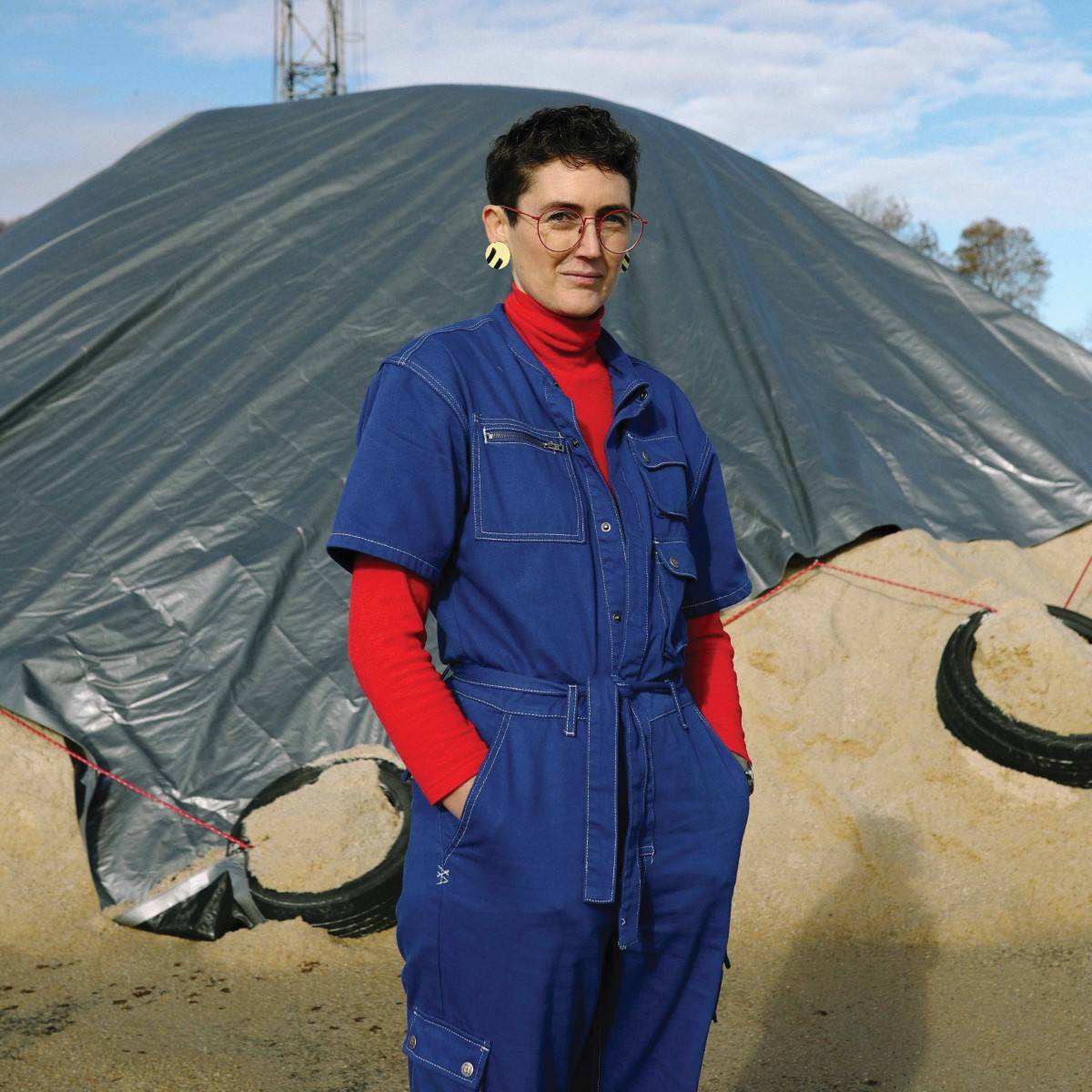Art Centre: An Ali Curung Renaissance
The lifeforce of Kaytetye Country is palpable within the works of artists from Arlpwe Art and Culture Centre.
Words: Louise Martin-Chew
In central Australia, Art Centres may be located a long way off the beaten track. Yet Ali Curung, where the Arlpwe Art and Culture Centre is located on Kaytetye Country is only 22km off the Stuart Highway, 378km north of Alice Springs and 170km south-east of Tennant Creek. Here collectors are able to visit and meet artists from the Kaytetye, Alyawarr, Warlpiri and Warumungu nations.
However, despite Ali Curung’s relative accessibility, it feels remote from the rest of the world. The landscape is arid, without surface water, featuring spinifex grasslands and trees over red sand plains, with a sense of this dry geography palpable in the art that emerges from there.
The Art Centre was established in 2008. Maria Napanangka Dickenson, an artist, art worker and member of the board of directors, says that most of the centre’s artists focus on landscape, informed by time spent on Country. Her own work expresses “my Country, my Father’s Country and my Grandfather’s Country. They used to tell me stories about how they would travel between the communities.”
Art has offered an important outlet for this community, with contemporary painting related to bush medicine, bush tucker and landscape. Art Centre manager Harry Price, who has worked at Arlpwe for 15 months says, “The painting here is not always directly reliant on specific dreaming stories, but always deeply rooted in Country and culture. This is a dog/dingo dreaming site for the Kaytetye people, but four main tribes coexist here. While people have their dreaming, it is their choice to not always paint that.”
The future looks bright, with Arlpwe’s first ever Telstra National Aboriginal and Torres Strait Islander Art Award finalist shortlisted in 2022. This was J. Nampijinpa Long, who has since passed away. The Art Centre also had two finalists in the 2021 Vincent Lingiari Art Award (J. Nampijinpa Long and Martha Nakamarra Poulson), and Sonya Murphy Napaljarri was a finalist in the 2022 National Capital Art Prize in Canberra. A selection of work exhibited at Japingka Aboriginal Art, Fremantle in 2022 saw Levi McLean, now manager at Nyinkka Nyunyu Art and Culture Centre in Tennant Creek, suggest, “There’s a bit of an Ali Curung renaissance taking place. It’s not a place that’s been well known for painting, although there has been a history of exceptional carvers in the past. I don’t think the painting has really been on the radar until now… The work is beautiful, fresh, and profound.”
What is distinctive about the contemporary work is its abstracted expression of landscape and varied approaches to bush medicine. Price believes that “there is a healthy competitiveness that is visible in our developing profile. Artists want to have their own individual styles.”
Warlpiri lawman Warrick Miller Japangardi creates Warlpiri designs related to the ceremonial painting on the bodies of rain-makers that are dramatic and minimal, with bold shapes. Marcus Camphoo Kemarre, aka Double O, paints abstracted windows in a contemporary and minimalist style which have been shown numerous times with the Tennant Creek Brio, including in NIRIN: 20th Biennale of Sydney, 2020. Rachel Nangala Rankine’s Ngapa in the desert depicts rivulets of water-like veins snaking across her canvases. Maria Napanangka Dickenson’s finely dotted works scatter depth through colour to evoke the spirit and special character of her places while Sonya Napaljarri Murphy’s linear canvases pulse with painted rhythm. Price says, “People want to find their own way of painting. We foster that. I look back on old work and assist artists with developing their individuality.”
Ali Curung currently has a population of just under 500 people, and was originally a mission town, established in 1956. Different groups were moved there from their own areas due to the impact of mining and massacres. This drawing together of different groups has caused tensions to erupt in the past, with Price saying, “I believe it was a pretty classic story of white fellas coming in back in the day, and pushing all Indigenous people to the same spot, despite different cultures, languages and customs.”
Today, the Art Centre welcomes all members of the community and is a place that Dickenson suggests, “offers the capacity to keep everyone real good, to go on painting every day.” The results are spectacular.
This article was originally published in Art Collector issue 105, July-September 2023.
Featured image: Warrick Miller Japangardi at work in the Arlpwe Mens’ studio. Courtesy: the artist and Arlpwe Art and Culture Centre.

